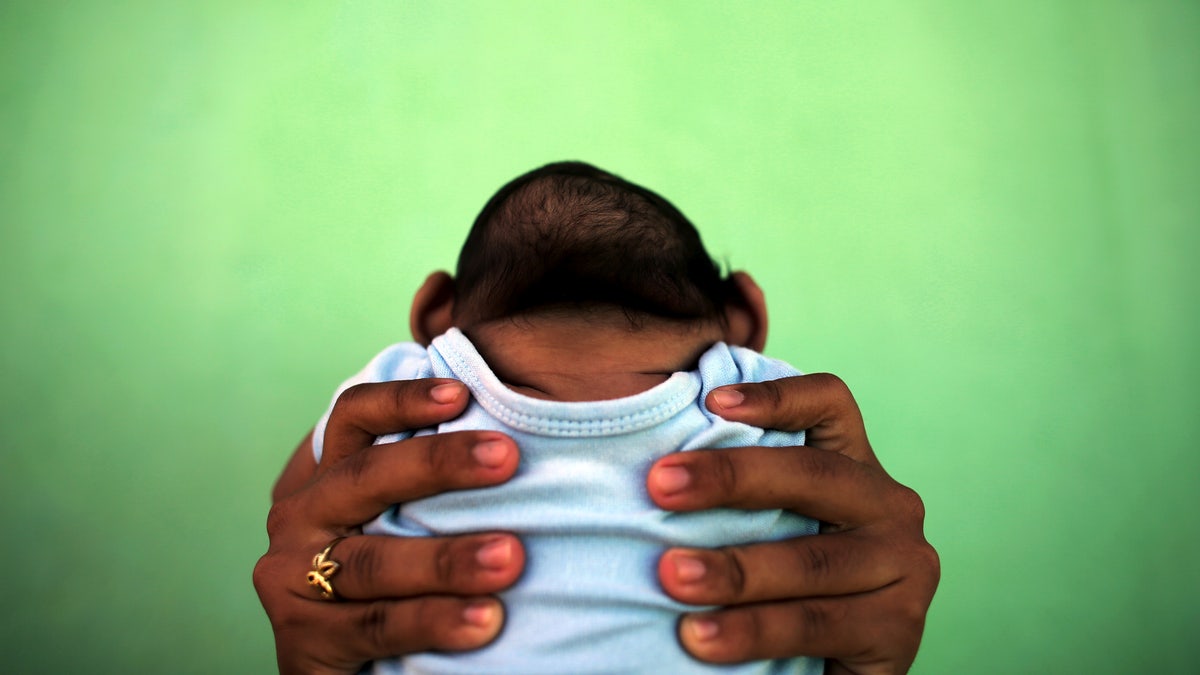
A 4-month-old baby born with microcephaly is held by his mother in front of their house in Olinda, near Recife, Brazil, February 11, 2016. (REUTERS/Nacho Doce/File Photo)
Cases of microcephaly in Colombia were four times higher this year than last, an increase that coincides with a widespread outbreak of Zika virus in the country, a report released on Friday said.
At its peak in July, microcephaly cases in Colombia were nine times higher than in the same month in 2015, according to the U.S. Centers for Disease Control and Prevention's weekly report on death and disease.
Overall, there were about 9.6 cases of microcephaly per 10,000 live births in Colombia, where the virus infected as many as 20,000 pregnant women since the start of the outbreak there in October 2015.
The numbers reflect a sharp increase in rates of the rare birth defect, but the number of cases was still far lower than those in Brazil, where Zika first arrived in May 2015. As of December 3, Brazil has confirmed 2,228 cases of microcephaly linked with Zika, and there are 3,173 cases still under investigation.
Those numbers are far higher than the 432 cases of babies born in Colombia with microcephaly in 2016, and another 44 that occurred among fetuses that did not survive the pregnancy, according to the report by researchers at the CDC and the Colombian health department.
The study's authors said the difference could have resulted from a number of factors, including the fact that women in Colombia had early warning about the risk of microcephaly.
In February, the Colombian Ministry of Health advised women to consider delaying pregnancy for six months, which may have played a role. During the study period, the number of live births fell by about 18,000 from 2015 to 2016.
Several experts also have suggested that women in Colombia took advantage of more permissive abortion laws, an option that was not available to women in Brazil, where abortion is banned in most instances.
